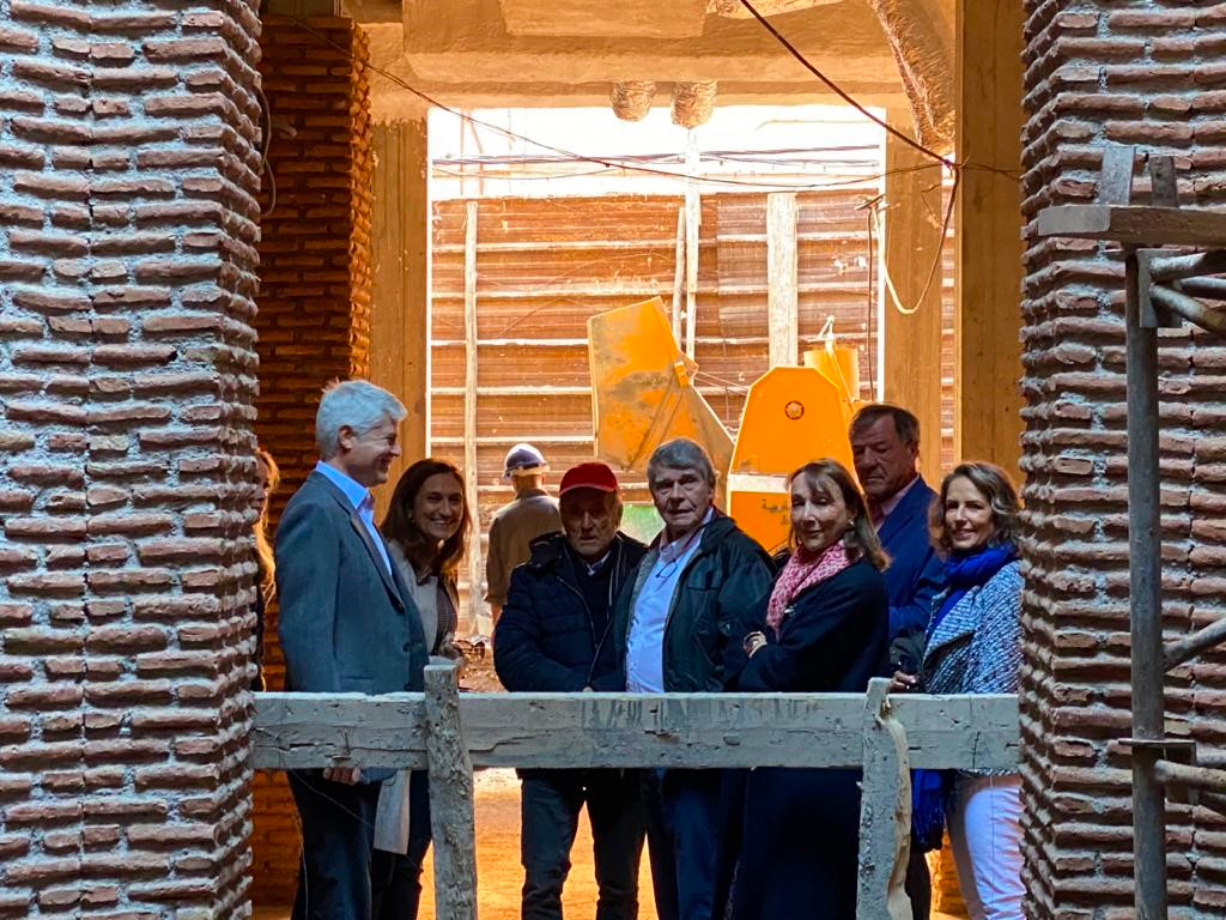The place
Since the dawn of time, people have been making jewelry to adorn their bodies. Often worn or given on special occasions, jewelry is closely linked to the traditions that punctuate individual and collective life. As a social marker, it reveals a bond or a rupture between people in the same group. A bond that can be emotional, political or economic. Jewelry is also the result of creation and know-how. As a product, it raises the question of its materials, techniques, historical and socio-economic conditions of production, circulation and value.
With a rich cultural program and a monumental collection, MAP Marrakech aims to question the functions and uses of jewelry. To open up avenues for understanding jewelry in all its complexity. In doing so, MAP Marrakech hopes to address fields as vast as anthropology, aesthetics, ethnography, psychology, sociology and history.
MAP Marrakech's mission is to explore the functions and uses of finery, reminding us that to be understood, it cannot be dissociated from the practices and thoughts that shape it.
Photos : noomoo
The architecture
Conçu par le duo d’architectes décorateurs franco-libanais, Michel Charrière et Joseph Achkar, le bâtiment est en lui-même une prouesse architecturale : inspiré de la medersa ben Youssef, il s’étend sur trois niveaux sur près de 1400 m² autour d’un puits de lumière octogonal avec une façade impressionnante qui s’inscrit parfaitement dans l’esthétique de la médina. Tailleurs de pierre, menuisiers, Zouaqeurs, plâtriers et autres maçons ont, durant les cinq ans qu’a duré le chantier, exprimé leur talent en utilisant, entre autres, pas moins de 180 000 briques en terre cuite et plusieurs dizaines de poutres en cèdre massif. Alliant concepts muséographiques modernes et tradition, cet espace reflète l’image d’un Maroc authentique qui sait répondre aux enjeux de la contemporanéité, une dialectique entre éléments classiques et technologie discrète. Sur la terrasse, le jardin suspendu est comme un dernier point de tension à la visite pour prolonger la réflexion et les rêveries.
Le duo d’architectes décorateurs franco-libanais, Michel Charrière et Joseph Achkar ont une réputation qui parle pour eux.
Depuis plus de 30 ans, ils sillonnent le monde pour restaurer hôtels particuliers somptueux, demeures monumentales et palais historiques et ont pourtant longtemps travaillé dans la plus grande discrétion. En 1983, Joseph Achkar arrive à Paris. Il a quitté son pays natal, le Liban, après l’assassinat de son père, figure de la chrétienté maronite et propriétaire d’un palace sur le Mont Liban. Il rencontre Michel Charrière, fraichement diplômé de l’école des Arts Décoratifs. Une passion pour les lieux chargés d’Histoire et leurs histoires les lie. Ils ont cette passion pour les merveilles architecturales du passé. Ils décident alors d’en faire leur métier. Ensemble, le duo va sauver, restaurer, aménager et meubler villas, châteaux, hôtels particuliers, manoirs.
En 2017, ils se voient confier par le Centre des monuments nationaux, un chantier colossal : la rénovation de l’Hôtel de la Marine sur la mythique place de la Concorde à Paris. Le projet est monumental dans tous les sens du terme. Le site fait 12000 mètres carrés. Achkar et Charrière y restaurent 500 menuiseries, ils créent une verrière de plus de 300 mètres carrés pour couvrir la cour intérieure. Le chantier dure 3 ans. Leur parti-pris artistique était de restituer l’atmosphère du XVIII ème siècle parce que selon « restaurer veut dire retrouver les décors de l’époque ». Pour le Monde des Arts de la Parure, ils ont créé ce lieu unique mêlant respect de la pure tradition architecturale marocaine et prouesse techniques innovantes.
« Il faut aller dans le sens d'un lieu, le contenu doit être en accord avec le contenant. »
Joseph Achkar
The Rooftop / Garden
The Terrace / Garden lets you discover and appreciate the immediate surroundings, from the storks' nests on the ramparts of the Badii Palace to the proud minaret of the Moulay El Yazid Mosque, a 12th-century cousin of the Koutoubia, all set against a backdrop of the Atlas Mountains. It is home to a hanging garden designed by landscape architect Marius Boulesteix, who created a singular planted space that evokes travel and invites you to stroll.
The founders
The MAP Marrakech project was born of the audacity and generosity of Marlène and Paolo Gallone. Originally from Switzerland, art lovers and frequent travelers, they were seduced by the genius and imagination of Man: the ornaments, ornaments and textiles of Africa and the Orient, precious, sometimes humble, echoes of so many identities and histories. Over the years, they have built up a collection that is unique in its diversity, importance and rarity.
In love with Marrakech for almost 40 years, Marlène and Paolo Gallone frequented its medina and souks in search of fabulous finds. The red city, the ethnic and commercial crossroads of Africa and the inspiration of all the Orient, always had a treasure in store for them at the end of an alley or in an unnamed fondouk. And so, quite naturally, the MAP Marrakech project found its place in the Kasbah district, symbol of an eternal Morocco. The building is a showcase for the collection, located in the heart of the Mellah, close to the historic center of Marrakech. Created by a pair of history-loving architects, Joseph Achkar and Michel Charrière, the building's architecture, inspired by medieval Morocco, is sober and warm. A shaft of light, echoing the traditional layout of riads, forms the geometrical heart of the building, illuminating large exhibition spaces that conceal a number of original exhibits.
(Source : Mon Maroc, récits et mémoires de Suisses au Maroc)



